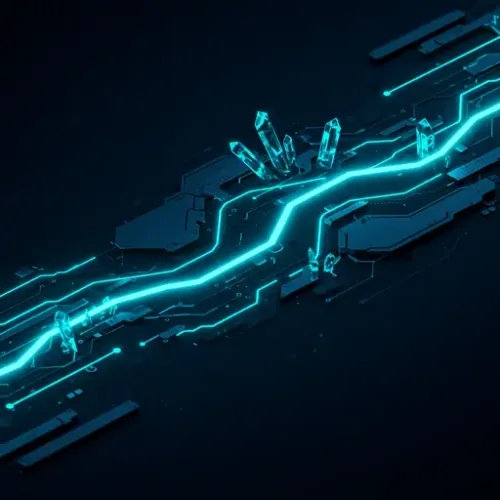Nebraska-led team explores using bacteria to power artificial intelligence

The AI Report
Daily AI, ML, LLM and agents news
Artificial intelligence is transforming our world, but its immense power comes with a significant and often overlooked cost: energy consumption. As AI models grow more complex and pervasive, the energy demands of traditional silicon-based computing are soaring, raising pressing environmental and logistical questions. What if there was a radically different, more sustainable path to building the intelligent systems of tomorrow?
Rethinking Intelligence: Computing with Life Itself
The University of Nebraska–Lincoln’s School of Computing is exploring a groundbreaking answer: harnessing the inherent intelligence of living cells. Led by Associate Professor Sasitharan Balasubramaniam, a team is developing bio-hybrid systems that tap directly into the sophisticated networks found within bacteria, aiming to create vastly more energy-efficient and adaptable computing architectures.
Beyond Silicon: The Bacterial Advantage
While AI draws inspiration from the human brain's neural networks, directly utilizing living neurons for computation presents challenges, including ethical considerations and their inherent fragility. Bacteria, however, offer a compelling alternative. They are robust, adaptable, and, crucially, possess complex internal network structures. Balasubramaniam points out that these bacterial networks bear a striking resemblance to artificial neural networks. If the structure is there, why not exploit it for computing? This resilience makes bacteria a far more viable substrate for future bio-hybrid computers.
How Bio-Hybrid Computing Works
The team’s approach centers on establishing seamless communication between electroactive bacteria, specifically Shewanella oneidensis, and conventional computing systems. Utilizing "electrogenetics," electrical pulses are sent to stimulate specific genes within the bacterial gene regulatory artificial neural networks (GR-ANNs). This stimulation triggers a chemical reaction within the bacteria, which, in turn, produces an electrical output that can be interpreted by the computer. This creates a powerful feedback loop where the bacteria can effectively perform certain computational tasks, offloading a substantial portion of the workload from silicon-based processors.
A Sustainable Future for AI
The most immediate and profound benefit of this research lies in its potential to revolutionize AI's energy footprint. By allowing bacterial cells to handle intensive computational "heavy lifting," the project promises a significant reduction in energy consumption. This isn't merely about incremental improvements; it’s about a paradigm shift towards truly energy-efficient computing, leveraging nature’s own solutions to address one of technology's biggest challenges. This could be a true game-changer, not just for reducing energy costs but for unlocking new forms of "natural intelligence" to enhance AI capabilities.
Transformative Applications on the Horizon
Success in this endeavor could usher in a new era of bio-hybrid computer systems and architecture. The implications extend far beyond data centers. Imagine "smart pills" embedded with programmed bacterial computing capabilities. These microscopic devices could interact with natural bacterial populations in the body, sensing and controlling infections with unprecedented precision, bridging the gap between healthcare and technology.
This isn't just a niche scientific pursuit; it's a fundamental reimagining of how we build and interact with computing systems. By looking to the simplest forms of life, we might uncover the most sophisticated solutions for the complex challenges of artificial intelligence. This pioneering work could redefine what's possible, inspiring entirely new fields of discovery.
The Call to Innovate
This research reminds us that innovation often comes from unexpected places. As we push the boundaries of AI, the ability to integrate biological systems offers a potent pathway to more sustainable, powerful, and adaptable technologies. The question isn't just what AI can do for us, but how we can build it in harmony with the natural world. This is merely the beginning of a profound journey, one that invites us to reconsider the very substrate of intelligence.

The AI Report
Author bio: Daily AI, ML, LLM and agents news
